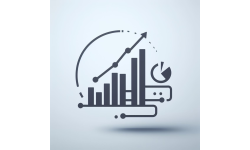Subcategories
-
Descriptive
The most basic form of analytics that analyses current and historical data for insights on “what” happened and how to approach the future. Ninety per cent of organisations today use descriptive analytics.
-
Diagnostic
Performed to understand the “why” behind what happened. This kind of analytics is used by businesses to get an in-depth insight into a given problem provided they have enough data at their disposal.
-
Predicting
Predictive analytics serves as a powerful tool that scrutinizes historical data patterns and trends, thereby equipping businesses with foresight about potential future occurrences. This insight is instrumental in formulating realistic objectives, facilitating strategic planning, and tempering expectations to align with probable outcomes. This proactive approach empowers businesses to anticipate changes and adapt accordingly, ensuring they remain resilient and competitive in their respective markets.
-
Prescriptive
Prescriptive analytics, the advanced successor of predictive analytics, introduces the dynamic capability to influence future scenarios. It guides potential outcomes and formulates actions that are poised to optimise key business metrics. Leveraging simulation and optimisation techniques, prescriptive analytics transcends from merely predicting ‘what could happen’ to advising ‘what should be done’, thereby enabling businesses to make data-driven decisions and strategic moves. This proactive approach not only anticipates changes but also suggests the best course of action to achieve business objectives.






